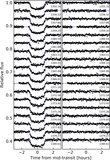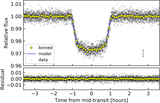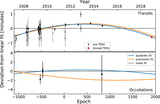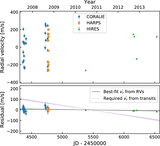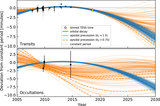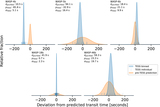Image Details
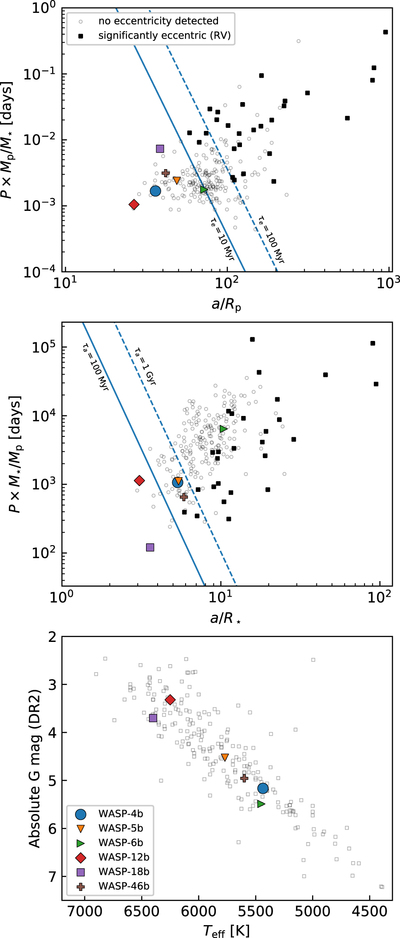
Caption: Figure 5.
WASP-4b in the context of other hot Jupiters. Most of the data in these plots are from Bonomo et al. (2017), who measured the eccentricities using radial velocities. The colored symbols highlight WASP-4, WASP-12 (which also shows evidence for a decreasing period), and the hot Jupiters analyzed in the appendix. Top: key parameters relevant to eccentricity damping. Solid squares represent planets with a securely detected nonzero eccentricity. Circles represent planets whose orbits are consistent with circular. Lines of constant damping timescale are drawn based on Equation (14) and assuming ﹩{Q}_{{\rm{p}}}^{{\prime} }={10}^{5}﹩. WASP-4b has one of the shortest eccentricity damping times. Middle: key parameters relevant to orbital decay. Lines of constant decay timescale are drawn based on Equation (15), assuming ﹩{Q}_{\star }^{{\prime} }={10}^{7}﹩. WASP-4b has a relatively short orbital-decay timescale, although it is not as extreme a case in this regard as it is for eccentricity damping. Bottom: a Hertzsprung–Russell diagram for hot Jupiter hosts. WASP-4 appears to be on the main sequence.
Copyright and Terms & Conditions
© 2019. The American Astronomical Society. All rights reserved.


